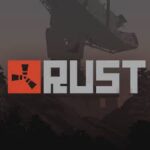Kalahari stands as Free Fire’s boldest departure from the familiar tropes of Bermuda and Purgatory. Debuted in 2020's OB20 update, this desert-inspired map brought a new flavor to the battle royale: blistering heat, dusty vistas, and vertigo-inducing heights. It's a fast-paced arena that rewards map mastery, tactical positioning, and quick thinking. In this deep dive, we'll explore Kalahari’s history, landmarks, loot dynamics, tactics, pros and cons, community insights, and what the future may hold.
1. Origins & Design Philosophy
Garena introduced Kalahari as Free Fire’s third official map after Bermuda and Purgatory. In their dev blog, the team acknowledged player feedback that desired a more vertical, fast-paced map distinct from the earlier releases
Key design pillars:
-
Small but intense: Kalahari is the smallest map yet, designed for rapid engagements and condensed firefights .
-
Vertical emphasis: Hills, canyons, and high platforms force multi-dimensional combat .
-
Story-driven visuals: Desert ruins, submarine wrecks, oil drills, and ancient skeletons convey a world with lore .
2. Map Overview & Key Locations
According to Liquipedia, the principal named zones are: Shrines, Council Hall, Bayfront, Confinement, Refinery, Santa Catarina, Command Post, and Mammoth .
High-Tier Loot Zones
-
Refinery: Central, industrial complex packed with loot and vertical cover .
-
Command Post: Dense compound with buildings and high-tier gear .
-
Mammoth: Open area by desert skeletons offering strong gear but high exposure
-
Santa Catarina: Shipwreck-adjacent settlement loaded with equipment .
Stealth/Medium Loot Zones
-
Confinement: Out-of-the-way, quieter, smaller loot but fewer players
-
Shrines & Bayfront: Offer moderate loot and chances for ambush .
Sniper & Vertical Zones
-
The Submarine (aka The Sub): Wrecked sub with great vantage points and sniper weapon spawns
-
Rock Hills & Canyons: Rich in vertical ambush spots; favors sharpshooters .
3. Core Gameplay & Tactical Dynamics
3.1 Vertical Warfare
Height is survival: Players must constantly check above and below. Dominating high ground equals viewing corridors and ambush dominance .
3.2 Fast-Paced Chaos
Small size + maximum 50 players = instant skirmishes. SMGs and shotguns shine early, while ARs and snipers take over later .
3.3 Lootabre Balance
High risk zones include high-tier loot but come with high conflict; quieter areas offer survival but lesser gear .
3.4 Cover and Mobility
Lack of trees is replaced by strategic use of gloo walls, shield guns, ziplines, and cacti for movement and cover
3.5 Environmental Hazards
Open desert and tall cliffs make flanking and tactical awareness essential. Bushes and sand dunes can be deceptive .
4. Tips for Victory
🪂 Best Landing Spots
-
High-traffic: Refinery and Command Post for aggressive starts with maximal loot .
-
Stealth-focused: Confinement and Shrines let you gear safely but keep alert.
🔫 Weapon Loadouts
-
Initial engagement: SMGs and shotguns for short-range combats.
-
Mid-late game: ARs like Scar or M4, sniper rifles like AWM or Kar98k for vertical engagement .
-
Support gear: Gloo walls, shield guns, medkits, and grenades are a must.
⚙️ Character Abilities
-
Alok: Team healing aura for open-field duels .
-
Chrono: Creates shield zones, useful in open desert or mid-combat situations
🧭 Battlefield Awareness
Constant scanning—above, in ruins, and in open areas—is critical. Use ziplines and cliffs wisely to surprise or escape .
5. Community Reception
What Players Love
-
Vertical combat & sniper possibilities are refreshing .
-
Quick, dynamic gameplay with constant engagements .
Pain Points
-
Dull desert palette causes visibility issues .
-
Loot distribution can be inconsistent, sometimes leaving players under-geared .
-
High-ground campers can dominate ʻcause unbalanced yet unavoidable terrain .
6. E-sports & Competitive Role
Initially part of ranked rotations, Kalahari was dropped due to community pushback about its unbalanced design .
However, it remains featured in FFML tournaments, highlighting its competitive appeal when mastered .
7. Kalahari in Comparison
| Feature | Bermuda | Purgatory | Kalahari |
|---|---|---|---|
| Map Size | Medium | Medium-large | Smallest |
| Terrain | Balanced | Urban/bridge focus | Desert & vertical |
| Combat Pace | Steady | Objective-based | Fast, chaotic |
| Ideal Weapons | ARs & SMGs | Versatile builds | SMGs, Snipers |
| Visuals | Green/tropical | Urban/neutral | Desert orange |
| Competitive Use | Ranked staple | Occasionally used | Removed from ranked |
8. Evolution & Future Outlook
-
Seasonal revamps: Garena frequently themes Kalahari with sandstorms or tech overlays (e.g. sandstorm or futuristic skins) .
-
Special modes: Temporary 4v4 clashes and events in the map add variety .
-
Balance patches: Ongoing tweaks address camper dominance and loot fairness .
New maps like Solara are joining the roster (like OB49 introduces Solara combining Bermuda and Kalahari terrain) , though Kalahari's distinct gameplay ensures its return in future rotations.
Conclusion
Kalahari is Free Fire’s adrenaline-fueled answer to players seeking frantic, vertical warfare. With its desert expanse, exposed combat zones, and quick engagements, it offers a fresh and challenging experience. While map flaws like visibility issues and loot distribution persist, strong tactics and map control can overcome them.
Whether you thrive on sniper duels atop crumbling towers or close-quarters SMG runs through abandoned structures, Kalahari rewards preparation, awareness, and adaptability. Its ups and downs have sparked debate—some players love its chaos, while others wish for more balance. But perhaps that debate is the mark of a map with character.




































